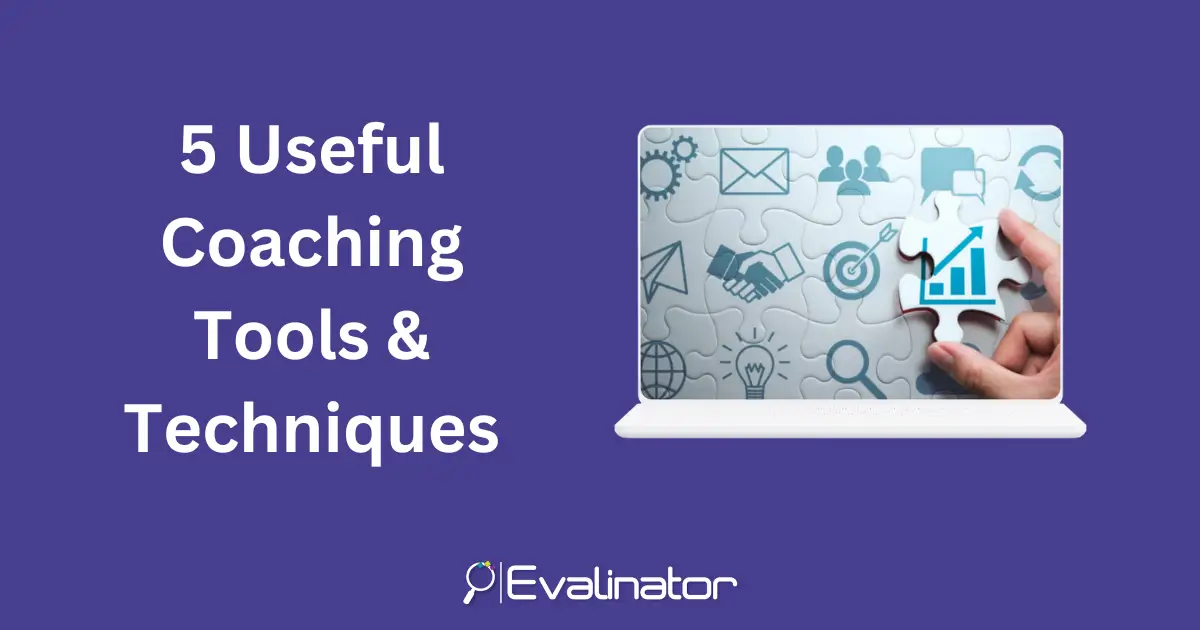


In this blog, we will list five popular and useful coaching tools and techniques that can help you enhance your coaching process.
Using these tools, you can really help your clients unlock their full potential and achieve their personal and professional goals.
The five valuable coaching tools we’ll touch upon in this blog are:
Each of these tools serves a unique purpose in facilitating self-awareness, goal clarification, and transformation. Each of these is available as part of your Evalinator subscription.
The Wheel of Life is a popular coaching tool used to assess an individual’s level of satisfaction in different areas of their life.
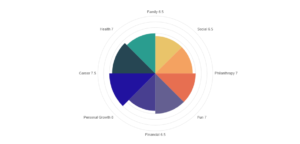 It consists of a wheel divided into segments representing key life domains such as career, relationships, health, finances, and personal growth. Coaches work with clients to rate their level of satisfaction in each area and identify imbalances or areas needing improvement.
It consists of a wheel divided into segments representing key life domains such as career, relationships, health, finances, and personal growth. Coaches work with clients to rate their level of satisfaction in each area and identify imbalances or areas needing improvement.
The Wheel of Life is very versatile and can be easily customized to suit any other area.
Popular variations are:
You can create your own online Wheel of Life with Evalinator. This tool serves as a visual representation of the client’s life, helping them prioritize and set goals for holistic development.
You can also create a Wheel with dimensions where each dimension comprises of multiple questions. This is useful when you want to do a more detailed analysis of a subject area. The questions roll up to the dimensions. A Wheel with dimensions can also be easily created with Evalinator.
The DISC assessment is based on the DISC model created in 1928 by William Marston. (a free template that you can use for your practice is available here)
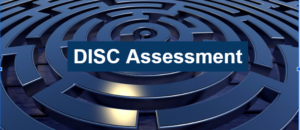 This is very a popular tool for understanding behavioral styles. It categorizes individuals into four main profiles: Dominance, Influence, Submission (Steadiness), and Compliance(Conscientiousness).
This is very a popular tool for understanding behavioral styles. It categorizes individuals into four main profiles: Dominance, Influence, Submission (Steadiness), and Compliance(Conscientiousness).
Read in more detail our blog on the DISC model, and also take a sample assessment on that page. You can utilize this tool to help clients gain self-awareness, recognize their communication preferences, and adapt their behavior in various settings. The DISC assessment aids in improving interpersonal relationships, teamwork, and leadership effectiveness.
You can create your own custom branded DISC assessment for your own practice using Evalinator. It’s included with your subscription.
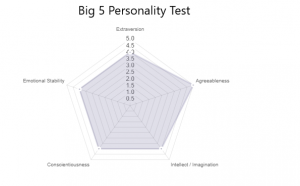 The Big Five Personality test is a widely recognized tool for assessing personality traits. It measures five dimensions: Openness, Conscientiousness, Extraversion, Agreeableness, and Neuroticism.
The Big Five Personality test is a widely recognized tool for assessing personality traits. It measures five dimensions: Openness, Conscientiousness, Extraversion, Agreeableness, and Neuroticism.
You can utilize this tool to help clients understand their personality traits, strengths, and areas for growth. By understanding these dimensions, individuals can make informed decisions about their career choices, relationships, and personal development.
Your Evalinator subscription includes your own custom branded version of the Big 5 test for your coaching practice.
Read more and take the Big 5 assessment for a spin here.
Goal setting is a powerful tool that helps individuals stay focused and motivated on their desired outcomes. By setting specific, measurable, achievable, relevant, and time-bound (SMART) goals, you can help your clients create a clear roadmap and direction for their actions.
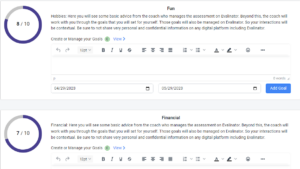 Goal setting boosts motivation. In addition, incorporating a mix of short-term and long-term goals offers several advantages.
Goal setting boosts motivation. In addition, incorporating a mix of short-term and long-term goals offers several advantages.
Short-term goals provide a sense of immediate achievement and gratification.
Long-term goals, on the other hand, provide a sense of purpose and inspiration. They represent your overarching vision and serve as a source of motivation and commitment.
Having a mix of short-term and long-term goals allows for a balanced approach, where you can experience a sense of achievement along the journey while staying inspired by the bigger picture.
Every Evalinator subscription includes this feature to incorporate both short-term and long-term goals. This allows for a balanced approach to helping your clients – providing a sense of achievement along the way and keeping your clients inspired to pursue their long-term aspirations.
The Before-After analysis tool is a reflective exercise that allows clients to assess their progress and transformation.
 Coaches encourage clients to compare their current state with their initial starting point so that they can identify achievements, what they would do differently, and think of areas for further growth.
Coaches encourage clients to compare their current state with their initial starting point so that they can identify achievements, what they would do differently, and think of areas for further growth.
If you use an Evalinator assessment for client onboarding, then ideally you and the client would mutually set some goals to execute on. Then, after say 60 days, you can have your client take the assessment again.
With these new results, you can now analyze the clients progress and set goals for the next milestone.
Every Evalinator assessment subscription includes this before-after analysis feature. This tool promotes self-reflection, boosts self-confidence, and provides motivation to continue the coaching journey.
The coaching tools we outlined in this blog play a crucial role in facilitating personal and professional development.
The Wheel of Life, DISC assessment, Big Five Personality test, Goal Setting, and Before-After analysis are all very useful tools that empower coaches and clients alike.
By leveraging these tools, individuals can gain self-awareness, set clear goals, understand their behavioral preferences, and track their progress.
Incorporating these coaching tools into the coaching process can lead to transformative outcomes and enable individuals to thrive in various aspects of their lives.
Each of these tools is included with your Evalinator subscription.
Go ahead and try them out with a 2 weeks free trial.
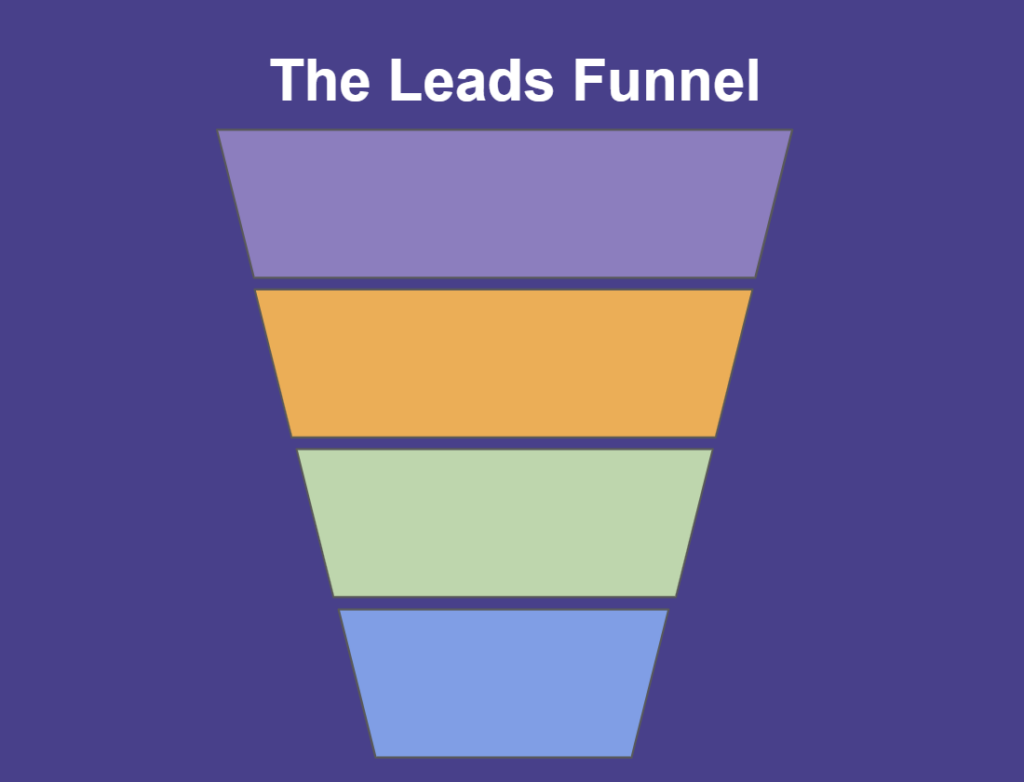
Feeling frustrated with lead generation?
Take this free, 5-minute quiz and get more prospects into your leads funnel.
Instant Results. Actionable recommendations. Email required.
Find Your Score >>